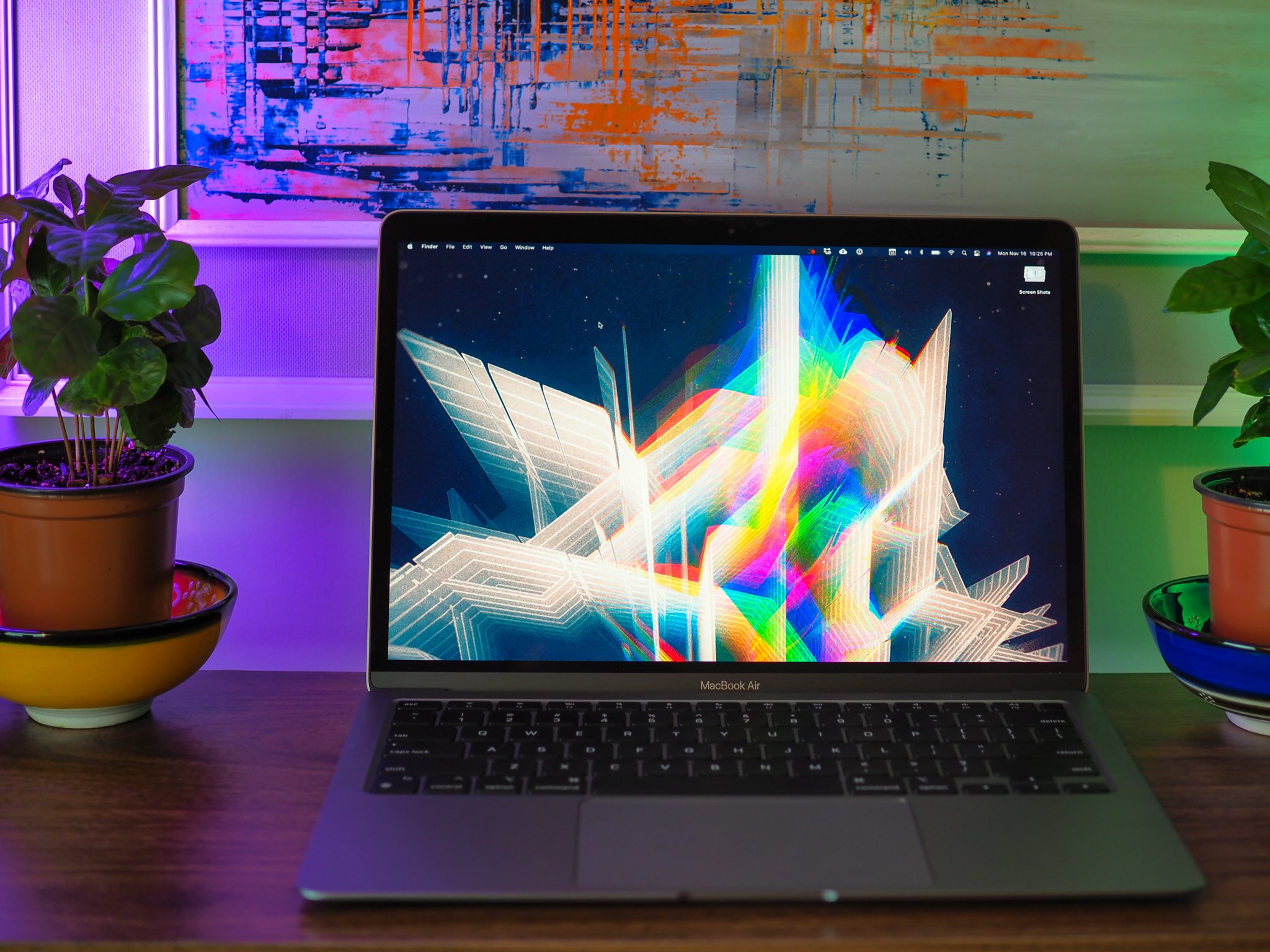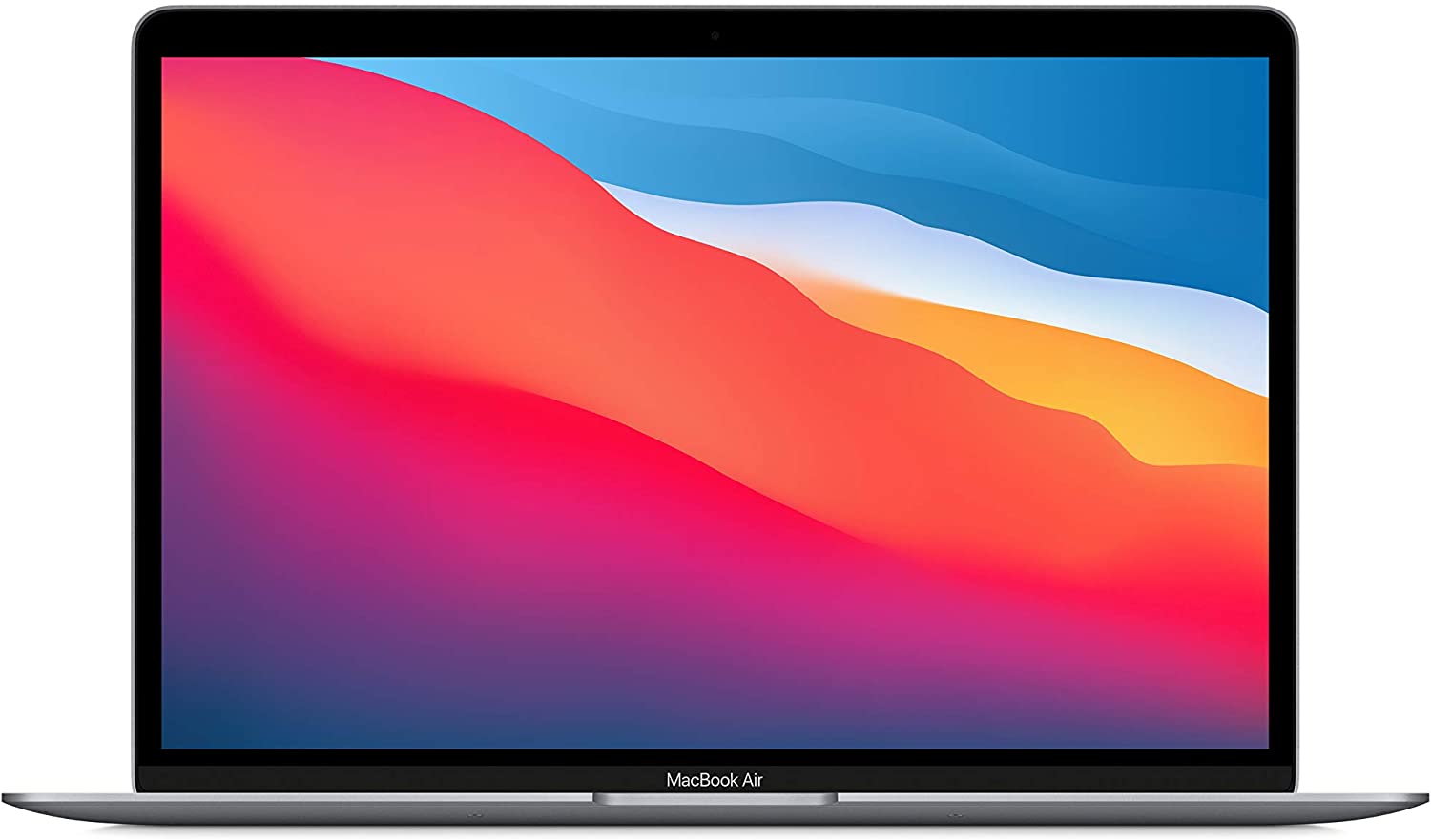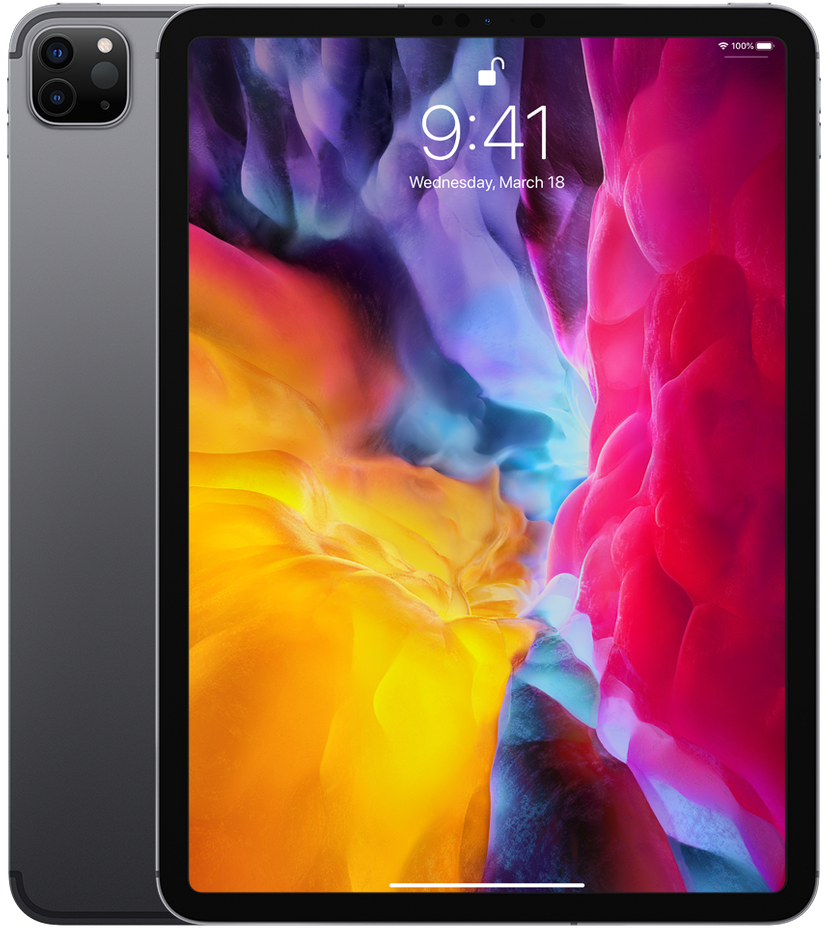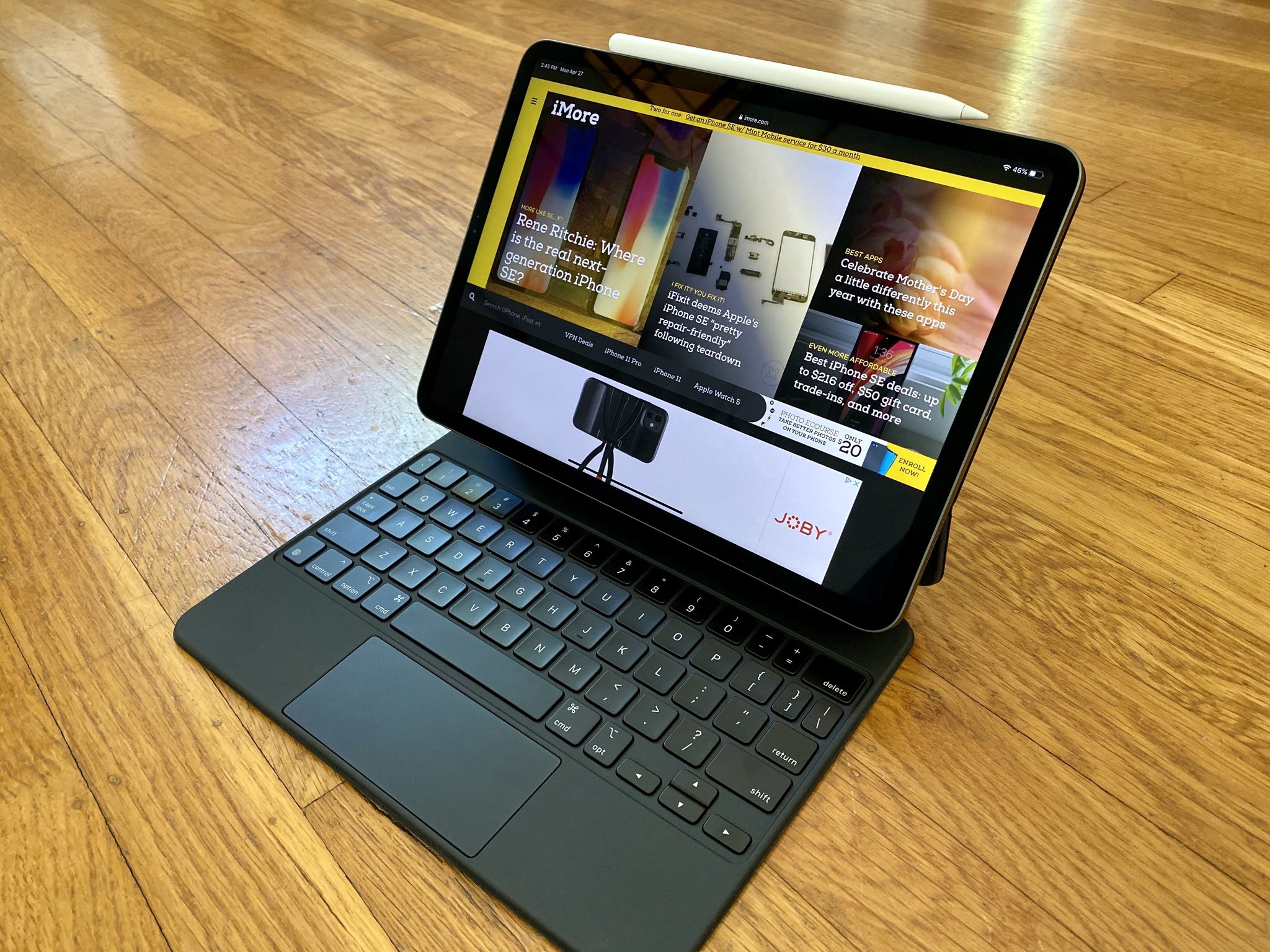MacBook Air vs iPad Pro: Which should you buy?


Lightweight powerhouse
The new MacBook Air is blazingly fast thanks to the Apple M1 system-on-a-chip (SoC). With the M1 SoC, you get an 8-core CPU, 7-core or 8-core GPU, and RAM in one chip. The CPU has four cores for performance and four cores for efficiency, so the battery life on the M1 MacBook Air will last you all day, and then some. And since it is geared for efficiency, there aren't even fans. You can choose 8GB or 16GB of RAM, up to 2TB storage, and it has two USB-C ports. And thanks to M1, you can even run iOS apps on macOS Big Sur.
For
- New Apple M1 SoC
- Scissor-switch Magic Keyboard
- 13.3-inch Retina Display with 2560-by-1600 resolution
- 8GB or 16GB RAM and up to 2TB of storage
- Runs macOS Big Sur
- Can run compatible iOS apps
Against
- Starts at $999
- Only 720p FaceTime HD Camera

Powerful iOS computing
The iPad Pro is a great computing device if you need to do things like writing, researching, simple coding, photo and video editing, and more tasks with iPadOS. You can choose the more portable 11-inch size, or go big with the 12.9-inch, and take great photos and video with the 12MP camera with Ultra Wide lens and LiDAR scanner. However, you're still limited by iPadOS and iPad hardware.
For
- Available in 11-inch or 12.9-inch sizes
- Liquid Retina Display
- Ultra Wide camera and 4K video recording
- Configurable up to 1TB of storage
- USB-C port
- New LiDAR scanner
Against
- Still limited by iPadOS
- Only one USB-C port
- Keyboard accessories are pricey
It can be a hard decision when it comes to the MacBook Air vs. iPad Pro because they're around similar price points but can differ greatly with what they can do. While iOS and iPadOS have come quite a way since Apple first introduced the iPad, it still has some limitations compared to a full desktop computing operating system like macOS. If you want a true computer without any limits, then the MacBook Air is the better buy. If you don't mind the limitations of iOS and just need a powerful tablet to do your entertainment and work on, then there's nothing wrong with the iPad Pro.
MacBook Air vs. iPad Pro: It comes down to what you want to do
Both the MacBook Air and iPad Pro are similar in terms of size (especially the 12.9-inch), but that's about it, honestly. We think that the M1 MacBook Air is the better buy (it's even our top pick for best overall MacBook) of the two because you're getting a full-featured but efficient computer experience with macOS Big Sur that can even run iOS apps while being lightweight enough to go with you everywhere. Plus, it just feels more natural to use for productivity, and you get true multitasking without weird RAM hiccups like constant refreshing of suspending apps on iOS 14 or iPadOS 14.
| Header Cell - Column 0 | MacBook Air | iPad Pro |
|---|---|---|
| Cost | Starting at $999 | Starting at $799 |
| Size | 13-inch | 11-inch or 12.9-inch |
| Screen | Retina Display | Liquid Retina Display |
| Processor/Chip | M1 SoC | A12Z Bionic |
| Charging | USB-C | USB-C |
| Ports | Two USB-C | One USB-C |
| Operating System | macOS | iPadOS |
| Starting storage | 256GB | 128GB |
| Configurable storage | Up to 2TB | Up to 1TB |
| RAM | 8GB, configurable up to 16GB | 6GB with 1TB model |
| Camera | 720p FaceTime HD | 12MP with Ultra Wide lens and 4K video and 7MP TrueDepth Camera |
While the MacBook Air has a higher starting price point than the iPad Pro, we think it's comparable if you look at similar storage space and capabilities. For a 256GB 12.9-inch iPad Pro, it costs $1099 for Wi-Fi only (or $899 if you go the smaller route), but again, you only get about 4GB of RAM, one USB-C port, and are limited to iPadOS. For $999, you get a 256GB MacBook Air with a 13-inch Retina Display, blazing-fast Apple M1 SoC, 8GB of starting RAM, two USB-C ports, and it runs macOS, which is much more capable than iPadOS.
It's also important to note that thanks to the M1 SoC, you can run iOS apps on macOS, but only if you have an M1 Mac, like the MacBook Air. You're getting the ability to run both macOS apps alongside iOS apps, which is not only convenient but can be a real boon for productivity. However, for iOS apps to run on macOS, they need to be supported by the developers. With the M1 MacBook Air, you can run the best of both worlds, as long as it's supported. It's a great machine for social media, email, writing, programming, testing apps in XCode, photo and video editing, graphic design, project management, finance, and so much more.
The MacBook Air is also the most portable laptop from Apple — it's so lightweight that you may even forget that you had it with you. It also has the much-improved scissor-switch Magic Keyboard and Touch ID, though it lacks the Touch Bar like its sibling, the new M1 MacBook Pro.

Meanwhile, even though the iPad Pro comes in a smaller 11-inch size, you get fewer ports, RAM, and must use iPadOS. And while you could get a Magic Keyboard to go along with your iPad Pro, it's pretty expensive (at least $300), and that just adds to the overall cost.
Even though iPadOS has come quite a way since the iPad's debut in 2010, it's still held back by limitations, such as only having three active apps on screen at a time through Split View and Slide Over modes. iOS also likes to refresh suspended apps after a period of idleness, which means multitasking can be slightly hampered.
Master your iPhone in minutes
iMore offers spot-on advice and guidance from our team of experts, with decades of Apple device experience to lean on. Learn more with iMore!
If you do not mind having to use iPadOS to do everything (it's possible, but can take more time than using a Mac), then an iPad Pro could be your only computer. However, we require a bit more for our computing needs, which is why we think a MacBook Air, especially the M1 version, is better.
MacBook Air vs. iPad Pro: We recommend Macs for serious computing
Apple has made many improvements to iPadOS, and while it's good for basic, short-term sessions, we can't recommend it if you need something for extended periods. With an M1 MacBook Air running macOS Big Sur, you can have pretty much an unlimited number of windows open for both macOS and iOS apps, and they will truly continue to run in the background — not be put into a suspended state as it would be on iOS/iPadOS. Everything will also be super fast and responsive since the M1 MacBook Air can even outperform a 2019 16-inch MacBook Pro. Plus, windows can be resized to however big or small you need them to be on macOS, instead of the 50/50 or 25/75 or 75/25 ratio in Split Screen or one-third screen size Slide Over window.
And keep in mind that the iPad Pro, despite the "Pro" moniker, will always be limited in terms of RAM, regardless of the screen size and storage capacity you choose. The MacBook Air starts with 8GB, which is already about double the RAM of the iPad Pro, and you can even configure it up to 16GB if need be. Having more RAM is always a good thing since it makes the machine feel and run faster, and it can handle even more resource-intensive tasks like video editing.
Christine Romero-Chan was formerly a Senior Editor for iMore. She has been writing about technology, specifically Apple, for over a decade at a variety of websites. She is currently part of the Digital Trends team, and has been using Apple’s smartphone since the original iPhone back in 2007. While her main speciality is the iPhone, she also covers Apple Watch, iPad, and Mac when needed. When she isn’t writing about Apple, Christine can often be found at Disneyland in Anaheim, California, as she is a passholder and obsessed with all things Disney, especially Star Wars. Christine also enjoys coffee, food, photography, mechanical keyboards, and spending as much time with her new daughter as possible.

